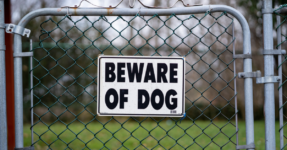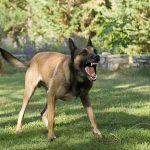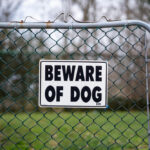Dog Attack Offences in Queensland and New South Wales

A contractor for the energy company Energex has lost his life after being mauled by three dogs at a home in the city of Logan, south of the Brisbane metropolitan area.
It is believed 42-year old Kane Minion was reading a meter at a house on Ison Road in the suburb of Greenbank at around 10.45am on Saturday, 3 December 2022 when set upon by three dogs, including a Bandog Bullmastiff and a Rhodesian Ridgeback cross.
Police and paramedics were called but Mr Minion tragically succumbed to his injuries at the scene.
It has been reported that the meter had been read several times in the past, the owners were not home at the time, the dogs were normally kept behind a second fence and the two described dogs were seized by animal control officers.
It has further been reported that a sign at the address read, “Warning – Guard dogs on duty”.
Police have confirmed the matter has been referred to WorkSafe and a report is being prepared for the state’s coroner.
“Our hearts go out to the family of the deceased male from Marsden and it’s also a difficult time for the owners who are attached to their dogs at that residence”, said Acting Police Inspector Gary Worrell.
“The matter has already been reported to Work Safe and they’ll run a parallel investigation with us as well.”
“He worked for Spotless, that’s a subcontractor to Energex.”
“Energex has a very good system where they email and communicate with the owners of known places where dogs are used for the protection of family homes or where they know there’s aggressive dogs and I believe that is the case before a contract goes to one of these residences or businesses so the dogs can be put away.”
Dog attack offences in Queensland
The Animal Management (Cats and Dogs) Act 2008 is the main piece of legislation that regulates the ownership and control of dogs in Queensland.
Section 194 of the Act makes it an offence for an owner of, or person responsible for, a dog to fail to take reasonable steps to ensure the dog does not attack, or in any way cause fear to, another person or animal.
The maximum penalties are:
- 20 penalty if no harm is occasioned,
- 50 penalty units if bodily harm is occasioned,
- 100 penalty units if grievous bodily harm or death is occasioned to an animal, or
- 300 penalty units if grievous bodily harm or death is occasioned to a human.
A penalty unit is $143.75 in Queensland at the time of writing.
Encouraging an attack
Section 195 of the Act makes it an offence for an owner of, or person responsible for, a dog to allow or encourage the dog to attack, or act in a way that causes fear to, another person or animal.
The maximum penalties are the same as those for the previous offence.
An ‘animal’
Sections 195 and 196 stipulate that a reference to an ‘animal’ does not include vermin that are not another person’s property.
The sections explain that vermin which are another’s property include:
- pet mice or guinea pigs, and
- vermin that are protected animals under the Nature Conservation Act 1992.
Defences
Section 196 of the Act makes clear that a person is not guilty of either of the above offences if he or she is able to prove, on the balance of probabilities, that:
- the dog’s conduct was a result of being attacked, mistreated, provoked or teased by the complainant or the animal, or to protect the defendant, or a person accompanying the defendant,
- in the case of an attack on an animal, the dog was engaged in hunting the animal on private property,
- in the case of an attack on stock, the dog was a working dog and conduct occurred during that work,
- the dog was a government entity dog acting within the scope of employment by the government entity, or
- the dog was a security patrol dog carrying out that function.
Dog attack offences in New South Wales
The Companion Animals Act 1998 (NSW) is the main piece of legislation which deals with animal ownership and control in New South Wales, including dog attacks.
Section 16 of the Act contains the offence of dog attack.
The section prescribes a maximum penalty of $11,000 for owners of dogs that rush at, attack, bite, harass or chase an animal (other than vermin) whether or not any injury is caused and the owner can be prosecuted even if not present when the incident occurred.
However, it is important to bear in mind that a person is not guilty of the offence if the incident occurred:
- as a result of the dog being teased, mistreated, attacked or otherwise provoked, or
- as a result of the person or animal trespassing on the property on which the dog was being kept, or
- as a result of the dog acting in reasonable defence of a person or property, or
- in the course of lawful hunting, or
- in the course of the working of stock by the dog or the training of the dog in the working of stock.
The maximum penalty for a dog attack increases to $44,000 if the case involves a menacing, or a dog that is considered dangerous or a ‘restricted’ dog.
In New South Wales, a ‘restricted dog’ is one of the following:
- American pitbull terrier or Pitbull terrier,
- Japanese tosa,
- dogo Argentino (Argentinean fighting dog), and
- fila Brasiliero (Brazilian fighting dog).
Any other dog of a breed, kind or description, whose importation into Australia is prohibited by, or under, the Customs Act 1901 of the Commonwealth (Perro de Presa Canario or Presa Canario).
Any dog declared by an authorised officer of a council, under Division 6 of the Companion Animals Act 1998, to be a restricted dog.
Dog attacks as a result of owner’s conduct
Section 16(1AA) of the Companion Animals Act deals with dog attacks resulting from owner’s conduct
If an ‘attack’ is proven to be the result of a ‘reckless act or omission’ by the owner, or by a person in charge of the dog, the maximum penalty is $22,000 and/or 2 years imprisonment where the ‘attack’
If the attack is by a dangerous and / or restricted dog, then the penalty increases to $55,000 and/or 4 years imprisonment.
If there is a finding of guilt in any scenario where a dog attacks a human, then the owner of the dog can be permanently disqualified from owning a dog. In cases such as this the dog is taken and homed by an animal welfare organisation and will eventually be put down.
The maximum penalty increases to $77,000 if an attack by a dog from the above category is a result of the owner’s failure to comply with the ‘control requirements’ under section 51 or 56 of the Act.
These requirements include keeping the dog in an approved enclosure unless muzzled and leashed in the case of a dangerous dog, or enclosed in a manner that is sufficient to restrain the dog and prevent a child from accessing it in the case of a menacing dog that is not under the effective control of an adult.
Encouraging a dog to attack
Section 17 of the Companion Animals Act outlines offences where the dog has been encouraged by an owner to attack.
There is a maximum penalty of $22,000 for anyone who ‘sets on or urges a dog’ to attack, bite, harass or chase any person or animal (other than vermin). The Act also gives the Court power to disqualify a guilty person from owning a dog for a specified period of time.
The maximum penalty increases to $77,000 and/or 5 years imprisonment where the person encourages a dog from the above category. Again, the court has the power to determine that a guilty person is permanently disqualified from owning a dog.
Dog attack offences within the Crimes Act 1900
Section 35A(1) of the Crimes Act 1900 (NSW) prescribes a maximum penalty of 10 years in prison for any person who:
(a) has control of a dog, and
(b) does any act that causes the dog to inflict grievous bodily harm on another person, and
(c) is reckless as to the injury that may be caused by the act.
Grievous bodily harm is defined as harm of a ‘really serious kind’, and can include any disfigurement of the face, permanent disability, fractured bones etc.
An ‘omission’ can constitute an ‘act’ for the purpose of the section.
Causing dog to inflict actual bodily harm
Under 35A(2) prescribes a maximum penalty of 5 years in prison for the above offence where ‘actual bodily harm’ is caused.
Actual bodily harm is defined as any injury which is not ‘transient or trifling’, and for example includes significant bruising, cuts and wounds that are not superficial.
Defences to dog attack charges
Legal defences to dog attack offences include:
- Self-defence,
- Duress, and
- Necessity
Where evidence of a legal defence is raised, the prosecution is then required to disprove the existence of the defence beyond a reasonable doubt.
The defendant is entitled to an acquittal if the prosecution is unable to do this.
Going to court over an alleged dog attack?
If you have been accused of an offence involving an alleged dog attack in New South Wales, call Sydney Criminal Lawyers anytime on (02) 9261 8881 to arrange an appointment with an experienced defence lawyer who will advise you of your options and the best way forward, and fight to achieve the optimal outcome.
In addition to our head offices in the Sydney CBD, we have criminal lawyers in Parramatta, Liverpool and other convenient office locations across the Sydney Metropolitan area, and beyond.






